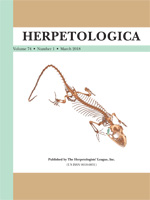With the use of a concordance and a mitochondrial tree–morphological character congruence approach, we show that recently discovered populations of Lophocalotes represent a new species. Like its only known congener, the new species occurs only on Sumatra in montane forests above 1000 m. The new species differs from L. ludekingi in having more gulars, ventrals, and subdigital lamellae; in having males with a lower nuchal crest not supported by an arched flap of skin and white gular markings; and in having females with cream buccal epithelia. These agamids are slow-moving, arboreal, generalist predators and lay 2–6 eggs, multiple times per year. Lophocalotes exhibits pronounced sexual dimorphism. Interestingly, coloration of the buccal epithelium is sexually dichromatic in the new species. The recently described nematode Spinicauda sumatrana infected most hosts in our sample, and parasite load increased with snout-to-vent length. Lophocalotes is closely related to Dendragama and Pseudocalotes and shares two derived characters with Pseudocophotis sumatrana: a prehensile tail and reduced keels on the subdigital lamellae.
How to translate text using browser tools
1 March 2018
Sumatra's Endemic Crested Dragons (Agamidae: Lophocalotes): A New Species from the Bukit Barisan Range, Comments on Lophocalotes ludekingi, and Ecology
Michael B. Harvey,
James Scrivani,
Kyle Shaney,
Amir Hamidy,
Nia Kurniawan,
Eric N. Smith
ACCESS THE FULL ARTICLE

Herpetologica
Vol. 74 • No. 1
March 2018
Vol. 74 • No. 1
March 2018
clutch size
diet
Lophocalotes achlios sp. nov.
ND4
parasites
sexual dimorphism
Spinicauda sumatrana




